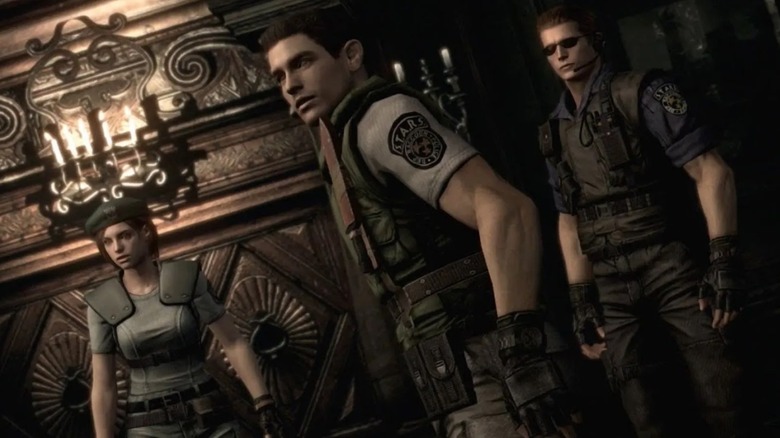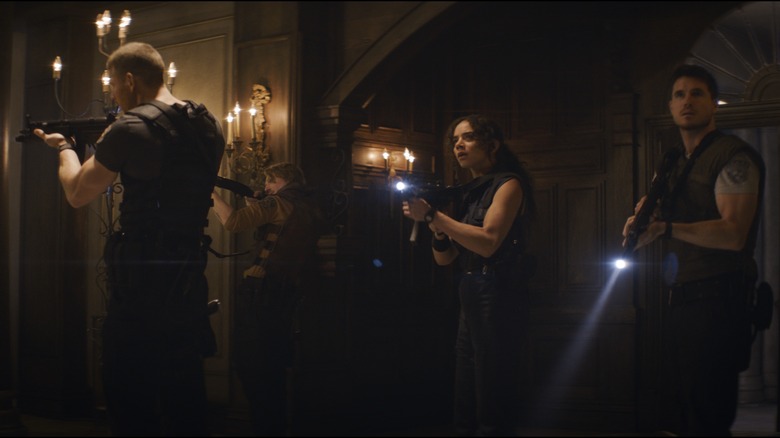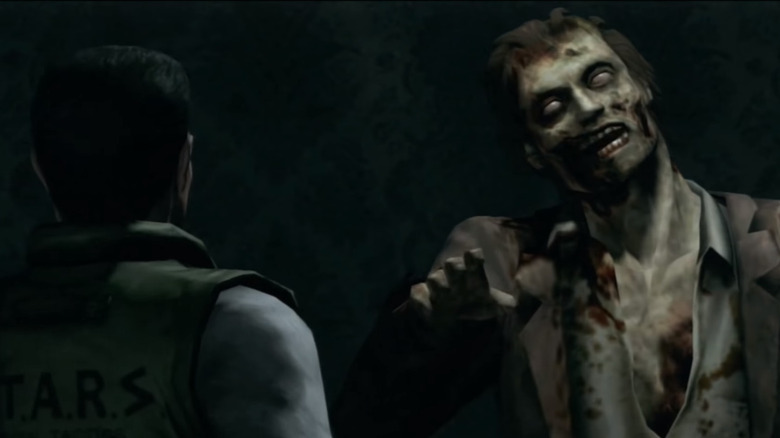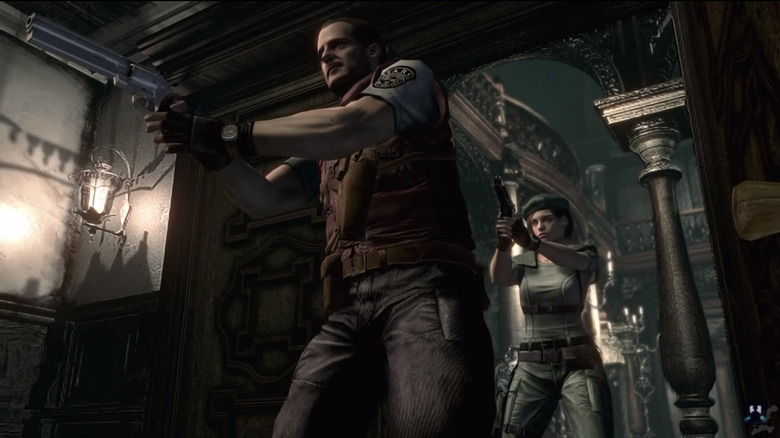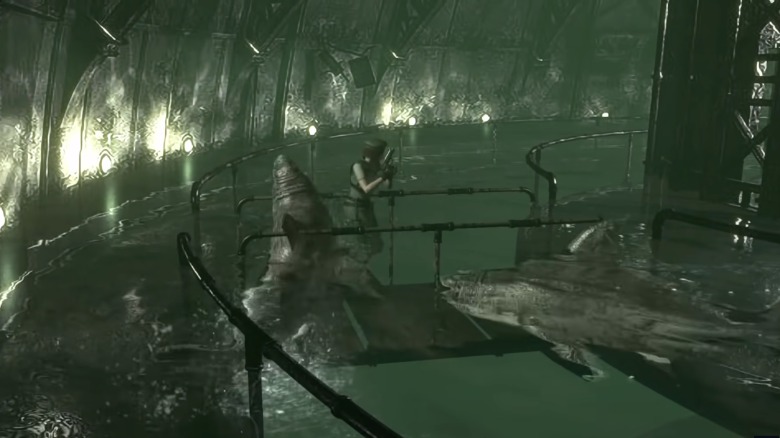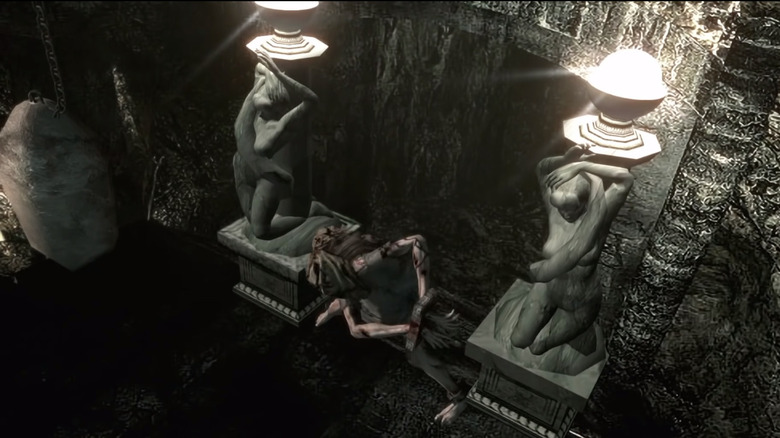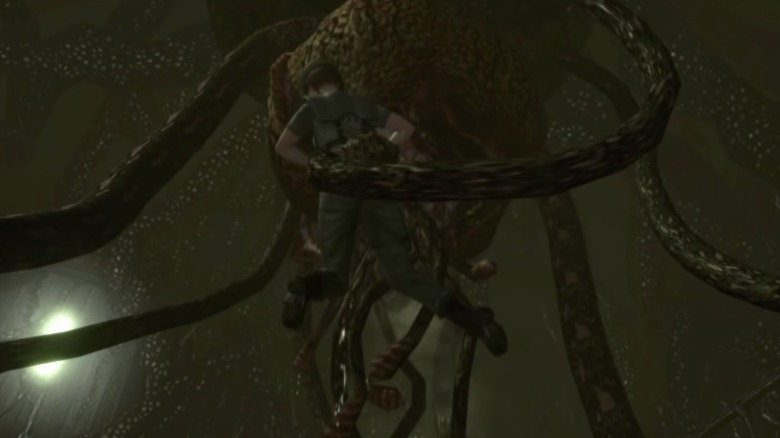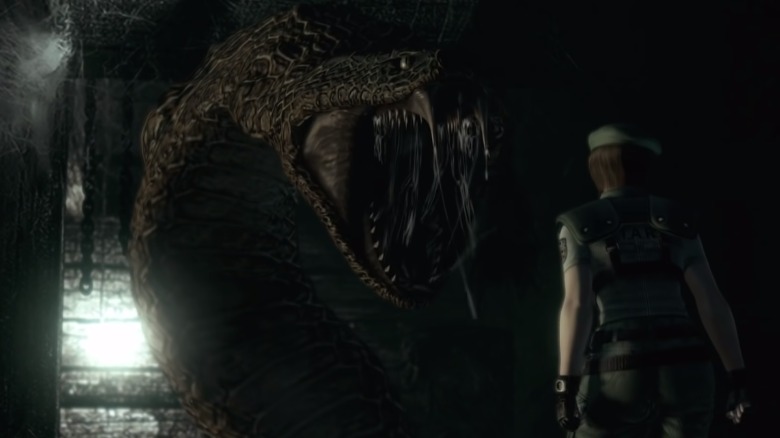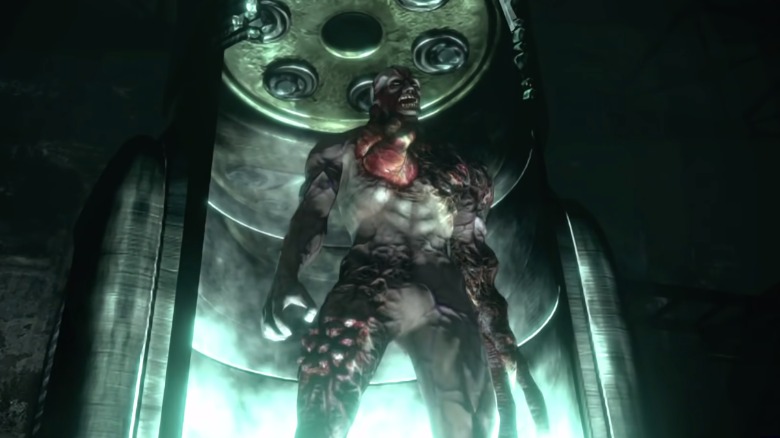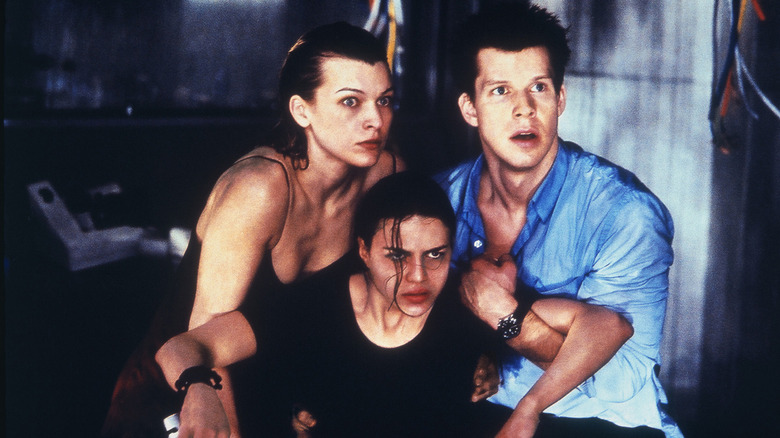The Incredible Resident Evil Movie George A. Romero Almost Made
George A. Romero is, without question or compare, the godfather of zombie cinema. The man behind classics such as "Night of the Living Dead" and "Dawn of the Dead" had a long, impressive career but will always best remembered for his invention of the zombie as we know it in genre filmmaking. It turns out that Romero actually brushed up against destiny in this regard a bit later on in his career as he very nearly got the chance to make the first film in another legendary zombie franchise. Namely, "Resident Evil."
Indeed, it has been well documented that Romero actually went so far as to write a screenplay for a film based on the Capcom video game series several years before we actually got one in the form of Paul W.S. Anderson's adaptation in 2002. Now, as we face another new adaptation of the games on the small screen — this time in the form of a live-action series from Netflix — it is worth taking a look back at Romero's script (which you can read online) and what his version might have looked like, how closely it would have hewed to the games, and how it compares with the film we ended up getting instead. Let's dive in.
Romero's brief history with Resident Evil
Romero's history with the franchise begins in 1998 when the filmmaker was asked to direct a commercial for the "Resident Evil 2" video game, which you can check out above. The 30-second spot only aired in Japan but it was enough of a showcase of Romero's skills in this genre that Sony Pictures actually then tapped him to pen a screenplay for their planned film adaptation of the hit video game series.
It is worth pointing out that Romero was not actually a gamer himself but, to familiarize himself with the material, according to Variety, he watched a video of one of his assistants playing through the game. So, in a roundabout way, he did do the homework to craft his take on a unique zombie-filled world created by the T-virus and the Umbrella Corporation.
Romero banged out a first draft in just six weeks and, though work continued for a bit, the studio ultimately passed on his take. Why, precisely didn't Sony and Capcom move forward with Romero? No definitive reason has been given but Capcom producer Yoshiki Okamoto did not mince words at the time saying, "Romero's script wasn't good, so Romero was fired." That is one man's opinion.
The script
It is impossible to get the full view of what Romero's "Resident Evil" movie would have been just by reading the draft of the screenplay available online. Especially when considering that there was no word at this time in regards to casting, or what kind of budget the filmmaker would have been working with. That being said, what is on the page paints a compelling enough story and, when marrying that with the vision of what the filmmaker did in the past, the picture becomes clear enough to understand what we might have been treated to in a slightly alternate reality. That reality likely would have been far better than the one that came around in 2002 with Anderson's film.
Romero's script is much closer to what fans will recall from the first game. The vast majority takes place at the Spencer Mansion and the characterization of that large, mysterious house feels similar to the game. It seemingly never ends, there are secret passageways everywhere, and elements of the house feel like a puzzle. Romero does a decent job of making the mansion a character like it is in the game. Granted, there are elements that take us away from the mansion and we do actually spend some time in Raccoon City, so it doesn't strictly stick to the first game — but the original game is clearly the main inspiration.
There are also tons of little Easter eggs written into the script that should ring true to fans. For example, there are various colored keycards that our main characters, mostly members of the military unit S.T.A.R.S., need to obtain throughout the film as they work their way through the mansion in an attempt to rescue an important scientist in the aftermath of an incident involving the T-virus. To that point, the plot is pretty simple. It's a mission-driven trip through the mansion whilst contending with the undead and corporate greed. Again, very much in the spirit of the original game. The Umbrella Corporation, S.T.A.R.S., it's all there.
Familiar faces, familiar places
The other big thing with this version of a would-be "Resident Evil" movie is that it actually uses characters from the games, rather than create new ones to focus on. As many will surely recall, Anderson's 2002 film introduced us to Alice, played by Milla Jovovich, who led us through the entirety of that iteration of the franchise. Romero, meanwhile, puts the focus squarely on Chris Redfield and Jill Valentine, two mainstays of the games from the very beginning. We also have Albert Wesker, the main antagonist of the games, in a prominent role as a double-crossing, corporate a**hole. These characters aren't exactly as they were in the games, with Chris more of a man of nature who is part Mohawk Indian, for example, but the familiarity feels in the spirit of the games, certainly.
Just from the script's opening pages, we get a sense of how faithful Romero is trying to be to the source material without adapting it beat for beat. The opening scene even features a clear reference to the so-called turnaround zombie, which is the first zombie players encounter in the game. "A HUNCHED FIGURE, leaning over A HUMAN BODY, apparently ... feeding! With a GRUNT, the figure turns and LUNGES, its face covered with BLOOD, at the CAMERA," the text reads.
Another nice little detail is that Romero wrote into the script that "there will be no indication of time ... except as shown on clocks." One thing about the original game, particularly the remake released in 2002, is that there are ticking clocks as you wander around and the passage of time can be a little difficult to get a hold of. A nice little touch.
How close is it to the games?
The plot beats don't quite resemble any of the early games as Romero opted to craft his own story, a relatively simple one. There is more of a team element here than the isolated "on your own" feeling of the first game, with other members of S.T.A.R.S. serving as cannon fodder for the zombies. But the characterization of the Spencer Mansion, the use of familiar characters, and the spirit of it all, feel much closer to the game than most other adaptations to date. Granted, "Resident Evil: Welcome to Raccoon City" did its damndest to capture the first couple of games on screen. Whether or not the movie was all that good is a matter of individual taste.
One of the biggest things that Romero did to make it feel closer to the original game is by including lots of familiar beasts. For one, we meet the zombie dogs early on and their introduction feels accurate — tense, scary, and surprising. But that's far from the only beast we get as the filmmaker included many of the main, big T-virus-created monsters from the original "Resident Evil" are present. Perhaps the most fun of these reveals is the tank full of zombie sharks that Chris falls into about midway through the film, much like the zombie shark tank included in the original game.
CHRIS kicks, paddles with his rifle, righting himself, getting his bearings. He's in a huge AQUARIUM that's built into one of the laboratory's walls... and he's not alone. There are SIX SHARKS in the tank. ZOMBIE SHARKS, their flesh rotting, leaking pus.
Even more monsters
Romero didn't stop there. He also included the familiar Plant 42, a giant plant that works as a boss battle in the first game. It's described as follows in the script:
PLANT 42, a monstrous schefflera, twenty times normal size. Most of its limbs reach upward, where they have opened CRACKS in the ceiling and walls, to stretch on into the facility above. There are also dozens of shorter, beefier "arms", each of which act independently, like tentacles on an octopus... and each has a large, drooling POD at its tip.
We also have the giant snake, which players of the game will surely remember. The snake also appears around the same time that Plant 42 does in the film.
The snake is so long, its body is draped on one side of the greenhouse, but its head is on the other. With the power of a dozer-shovel..JAWS like the open hood of a Cadillac...TEETH the size of windows...CLAMP onto Aiken's mid-section, instantly CRUSHING his ribs.
Plus, much like in the game, the Tyrant ends up working like a "final boss" in the film, with Wesker breaking into a lab and putting everyone in danger, all to get information he can sell for a profit.
Wesker squints, and through the freeze, sees the thing that stands sedated within the cylinder...THE TYRANT. It's nine feet tall. Like the hunters, it has more or less human form, though it's musculature is more defined than Superman's. One of its arms is scaled to size, but the other is much longer. Its hand dangles at knee-level. Monstrous steel CLAWS depend from its fingers, nearly touching the floor.
One of the only major threats we're missing is Lisa Trevor, who was in "Welcome to Raccoon City." She is, admittedly, a relatively big part of that game but, in fairness, Romero isn't going for a beat-for-beat adaptation here. And he did work in most of the other major monsters. Can't win 'em all.
How does it compare to the movie we got instead?
Now, for the important question: how does George A. Romero's unmade "Resident Evil" script compare to the movie we got from Paul. W.S. Anderson? There are a few inarguable points here. For one, Romero's script is by far more faithful to the source material with no ifs, ands, or butts. Sure, it's a bit cheesy at times, with a cornball romance between Chris and Claire, as well as lame jokes from members of the S.T.A.R.S. squad. But all of that is a small price to pay for the haunted house, monster-filled tale with a side of gun-heavy action that Romero brought to the table.
Anderson's "Resident Evil" movie, meanwhile, has a post-"Matrix" vibe to it that very much attempted to be hip and use the game's good name to make something that hardly resembles the source material. This is not to say such a movie can't be enjoyed and, to be fair, that iteration of the franchise performed very well commercially. But to say that it was true to the games would be unfair and inaccurate.
Romero's script reads like something that came from a guy who loved the genre he was working in (as he essentially created it) and wanted to bring his sensibilities to that world, rather than force that world to be something it isn't. We're never going to see that movie but, provided the choice, I'd very much like to visit the timeline in which that film exists to see what we may have missed out on.
